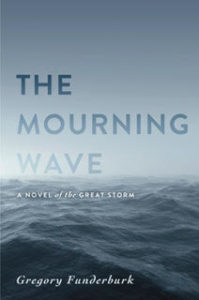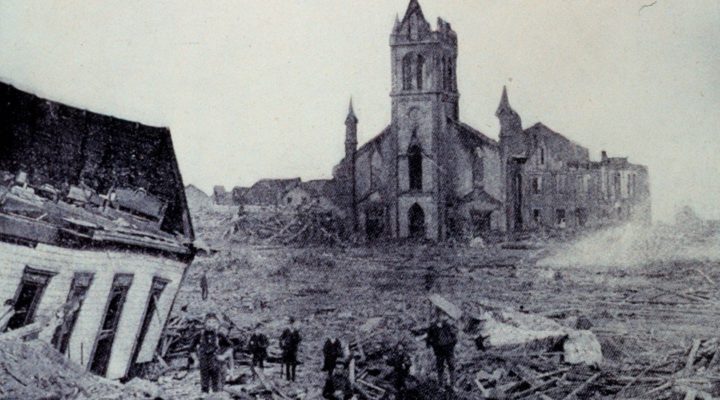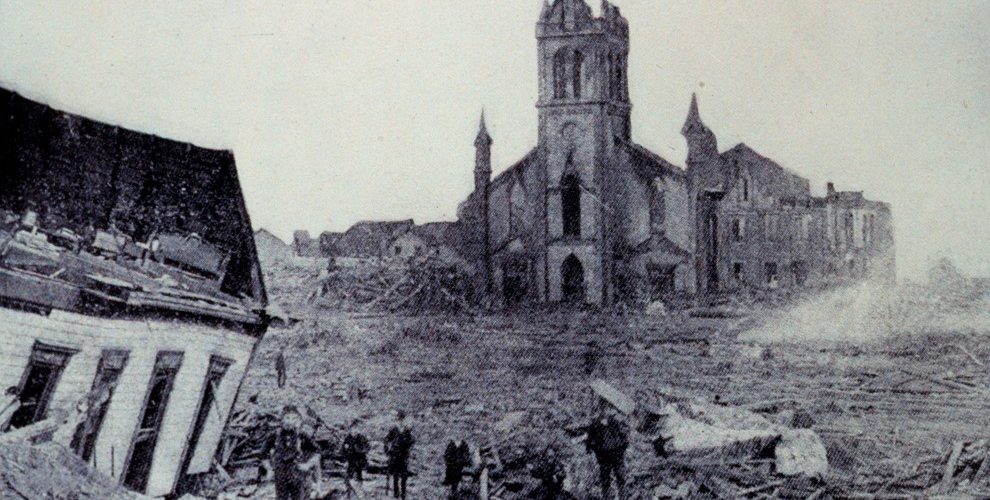The Great Storm that destroyed Galveston, Texas, in 1900 offers relevant lessons to a nation and world struggling through the coronavirus pandemic, according to minister and lifelong Houston resident Greg Funderburk.

Greg Funderburk
He is the author of The Mourning Wave: A Novel of the Great Storm, a work of historical fiction scheduled for release Sept. 8 — exactly 120 years from the day the infamous storm killed at least 8,000 in the barrier island community along Texas’ Gulf Coast.
Funderburk also serves as minister for pastoral care at South Main Baptist Church in Houston, imbuing the author with a tendency to offer healing amid suffering — on and off the page. “We cannot escape loss and sorrow in our lives, especially if we feel a duty to love each other,” he said.
One of the Great Storm’s key lessons is that faith and fellowship are vital to overcoming deep pain, Funderburk noted. “How do we go through loss rather than around it? We have to go through it. The book is about finding hope in the midst of terrible loss.”

The two storms, including Hurricane Laura, racing up the Gulf of Mexico this week are just another reminder of these spiritual truths, said Funderburk, who was educated and previously worked as an attorney. “It’s brought home to us that we don’t decide everything. We do, though, stand ready to help each other in the aftermath. That’s our calling. It always has been.”
Funderburk spoke with Baptist News Global about his new book, which is currently available online for pre-order, and about his experience with hurricanes.
What do you dread most about hurricanes?
There’s such a drama of nerves as you see it on the news and you see the storm forming and getting bigger and you’re wondering if it’s going to turn or hit where you are. And when it is coming ashore, there is still this anxious drama. Is the water going to rise here? Are the windows going to break? What’s going to happen to the city? What’s going to happen to people? There is this anxious drama that the stakes get raised higher and higher as the storm comes ashore and you don’t know what’s going to happen. You’re dealing with lack of information, and you find yourself under the stairs and you end up losing power for two weeks and living in a tent in your backyard.
What storms have been most formative in your life?
The one I remember from childhood may not have been a hurricane. I’m not even sure if it had a name. But I remember when we were on a family vacation to Galveston at this little motel. I remember a storm kicking up and me and my brother would venture out and a sheet of water would just hit us. We were both big baseball fans and we were holding these baseball trading cups which blew out of our hands. We were so upset we lost our trading cups. So, as a kid I saw what power a storm could have and that was probably about the time my dad told me about the Galveston hurricane of 1900. That really made an impact on me as a kid.
When and why did you start researching and writing this book?
It’s always been with me. It’s always been in my consciousness. When I became a lawyer, I felt like I needed an outlet to do something creative and so I just began writing. On this story in particular, I thought it would be a good, compelling and dramatic story and I began to do some research. I read all the books I could find about the event. I interviewed people who had personal knowledge or who had written about it. It just began to come together. I tried to develop a fictional narrative. I wrote a lot of it maybe 10 years ago, then put it aside for a while. I picked it up again a couple years ago.
Who is the lead character in the novel?
There was an orphanage in Galveston called the St. Mary’s Orphanage Asylum. It was on the beach. It had 10 nuns, the Sisters of Charity of the Incarnate Word, and they had 93 kids in their charge.
Is that a historical fact?
Yes. That’s real and you can read about that online. And when the storm came in, it left only three survivors at the orphanage. My story follows those three boys — who were 14, 13 and 8, or around those ages — as they survived the night and then made it into the city where they encountered other survivors and began to look for what their futures might be. The people they encounter and the scenes they encounter are right out of the books of survivor interviews and history books. And it was just devastating. This place that was once a city had been reduced to kindling and lumber everywhere.
Was it national news at the time?
I saw a picture in one of the books I read during my research. It was a picture of a Galveston flood thrill ride at Coney Island, N.Y. It was some sort of scary, dark ride that thematically involved the Galveston storm. It was a big moment in the consciousness of the nation. The magnitude was terrible because people didn’t evacuate like they would now.
Did Galvestonians have any warning of the approaching hurricane?
There is a book by Eric Larson titled Isaac’s Storm. It’s pretty famous. It’s about Isaac Kline, the chief meteorologist for Galveston at that time and his attempts to warn the city about the approaching storm. But they didn’t have the capacity to warn the whole city like we have now, and I don’t think they really understood how catastrophic a storm could be. They experienced winds of over 100 mph, but it was the storm surge that washed over the city and destroyed everything. If you didn’t have somewhere to climb, you were going to drown. They were just sitting ducks on a pile of sand that is a barrier island in Texas.
What do you hope readers take away from the book?
I’m hoping our communities come together and that we help each other. You begin to see the human condition in all of this. The book is being released on the 120th anniversary of the Galveston storm and as hurricane season is ramping up. But the one thing you couldn’t predict is a release in the middle of a pandemic. So, how do we move through seasons of catastrophe and find hope? I hope people can read this book and translate it into their own situations and find a path forward.


